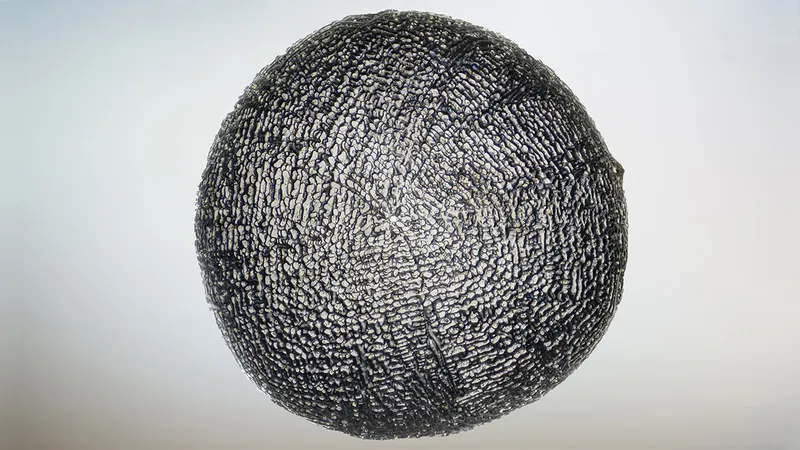
Unraveling the Mystery of the Duck-Billed Platypus: Nature's Most Confounding Creatures
2025-09-02
Author: John Tan
The Mystery of the Platypus Begins
The platypus, with its peculiar name meaning ‘flat-footed’ in Greek, has long stumped scientists and scholars alike. When the British Museum first encountered this astonishing creature in 1799, curator George Shaw believed it must be a hoax—so much so that he tried to cut off its beak to prove his point! Even after recognizing its authenticity, Shaw was baffled, describing it as 'the most extraordinary' mammal known to date, though his labeled classification suggested he thought of it more as a bird.
Conflicting Classifications
Just three years later, anatomist Johann Blumenbach, upon receiving a specimen, decided it was nothing short of a 'paradoxical bird-snout', a title that contributed to the chaos surrounding the platypus's identity. Zoologists grappled with how to categorize this creature within the outdated European classification system. The end result was a combination of names leading to the unwieldy Ornithorhynchus anatinus, a name that at least clarified how to pluralize 'platypus'!
An Unprecedented Anomaly
For decades, the platypus remained a source of confusion. Thomas Bewick, a Newcastle engraver and ornithologist, aptly noted in 1800 that the animal seemed to embody characteristics of a fish, a bird, and a mammal, making it entirely unique. 19th-century scientists, including Charles Darwin, were captivated by the need to unravel this biological enigma.
The Evolution of Taxonomy
As newly discovered species flooded into Europe from the Americas, traditional classification was strained to its limits. The existing Aristotelian model, which placed organisms in a linear hierarchy, struggled to accommodate the bewildering diversity of life forms, especially with the emergence of species like the platypus. With reports of creatures breaking every classification rule, mammals were defined as ‘viviparous quadrupeds’—but the platypus, which laid eggs and suckled its young, complicated matters even further.
Debate and Inquiry
As scientific curiosity grew, the classification of life accelerated into chaos. Different schools of thought emerged, with some European biologists suggesting platypuses bore live young like other mammals, while others insisted they constituted their own category due to their unique egg-laying habits. Not surprisingly, British naturalist Richard Owen took an audacious stance, enlisting hunting parties to gather female platypuses for study—thankfully, conservationists halted the plan before it could threaten the species.
The Local Knowledge
Crucially, the real experts on the platypus remained overlooked: the Aboriginal Australians who had long interacted with this fascinating animal. While some early settlers attempted to gather information from locals, many ignored these accounts, believing only formal scientific evidence mattered. It was through the efforts of curious individuals armed with knowledge of local fauna that the first tangible proof of the platypus’s egg-laying was finally obtained.
A Scientific Breakthrough
Eighty years after European entry into Australia, William Caldwell, a recent graduate from Cambridge, played a pioneering role in laying this controversy to rest. By collaborating with over 100 Aboriginal assistants and dedicating hours to the pursuit of platypus eggs in their natural habitat, he finally documented the species’ reproductive capabilities. His findings, derived from examining 70 females in just three months, confirmed the long-suspected truth.
Protection of the Platypus
As the scientific community gradually accepted the findings, the once-maligned platypus became a symbol of nature’s diversity. Legal protections were instituted in 1912, recognizing its importance as a unique species. With the scientific debates settled, even poet Ogden Nash could delight in the whimsy of this 'anomalous' creature, celebrating its dual nature and independent spirit.
Conclusion: Embracing Oddities of Nature
The platypus remains a testament to nature's complexity, defying simple classification and exhibiting traits shared across animal families. Its story serves as a reminder of the wonders and mysteries still awaiting discovery in the natural world.


 Brasil (PT)
Brasil (PT)
 Canada (EN)
Canada (EN)
 Chile (ES)
Chile (ES)
 Česko (CS)
Česko (CS)
 대한민국 (KO)
대한민국 (KO)
 España (ES)
España (ES)
 France (FR)
France (FR)
 Hong Kong (EN)
Hong Kong (EN)
 Italia (IT)
Italia (IT)
 日本 (JA)
日本 (JA)
 Magyarország (HU)
Magyarország (HU)
 Norge (NO)
Norge (NO)
 Polska (PL)
Polska (PL)
 Schweiz (DE)
Schweiz (DE)
 Singapore (EN)
Singapore (EN)
 Sverige (SV)
Sverige (SV)
 Suomi (FI)
Suomi (FI)
 Türkiye (TR)
Türkiye (TR)
 الإمارات العربية المتحدة (AR)
الإمارات العربية المتحدة (AR)